By Techno Crat
The household kitchen today is a very different beast from what our mothers and fathers and worked hours in. They are technically excellent, save electricity and fuel and not only have complicated recipes done in quick time, but can also help a single person do a number of dishes almost simultaneously.
Today’s kitchens also include special washing equipment, are safe and look excellent. Most of these require more space, though, and while such kitchens are becoming commonplace abroad, it is also catching up in India. Soon, we will have one in our homes, though in different capacities and abilities.
The full-fledged forms of such kitchens are actually very useful for a restaurant or in hotels, where servings are many.
More importantly, these kitchens of today operate with extraordinary internet support and through controls that can be regulated and pre-set through even a smart-phone app. These are generally termed as connected items through the Internet of Things (IOT).
Let us know more about them.
Modular kitchens
Kitchen appliances transform the modular kitchen, kitchen platform design, and by extension the entire house into a fancier, more functional, and more convenient version of itself. Also, there have always been great innovations in this sector but they have increased exponentially over the past few decades. So, brands such as Bosch, LG, etc. have transformed the game of smart in built kitchen appliances.
Today, the kitchen has expanded into dining rooms and has become more like a common area of the house. It has become essential to upgrade the aesthetics and functionality of the cooking area with the latest innovative smart appliances. Also, the coronavirus pandemic has further changed the dynamics of life. It has taught us the importance of a functional home. So, to make your home effectively functional, you need to have a smart kitchen with smart appliances.
Modular kitchens have always been in trend for their spaciousness and class. Moreover, there are several appliances that make cooking easy, quick, and interesting. Also, these appliances are commonly used in all kinds of kitchens and add to their look and utility. This has led to some of the best Indian home appliances brands offering competitive ranges of these products.
INTERNET OF THINGS (IOT)-BASED SMART KITCHEN
What is IoT?
The internet of things, or IoT, is a system of interrelated computing devices, mechanical and digital machines, objects, animals or people that are provided with unique identifiers (UIDs) and the ability to transfer data over a network without requiring human-to-human or human-to-computer interaction.
A thing in the internet of things can be a person with a heart monitor implant, a farm animal with a biochip transponder, an automobile that has built-in sensors to alert the driver when tyre pressure is low or any other natural or man-made object that can be assigned an Internet Protocol (IP) address and is able to transfer data over a network.
An IoT-based Smart Kitchen is with Automation & Monitoring System using NodeMCU ESP8266. The kitchen is one of the important places in a house. The safety factor is the main aspect that must be taken into account during the activity in the kitchen. The existence of gas leakage, uncontrolled fire, excessive temperatures & a moist environment must be quickly identified and addressed. Apart from this, it is necessary to monitor & control Kitchen Appliances like lights, fridge, oven, etc remotely.
System Design for Smart Kitchen System using IOT This proposed project consists of gas leakage detection system, weight measurement module, microcontroller and alert system.
Hardware requirements are:
- Arduino UNO
- MQ5 sensor
- DHT11 sensor
- Flame sensor
- Buzzer
- Load cell (Weight sensor)
- LED
- PC (Intel Core I7, 8GB RAM. Software Requirements are ARDUINO Compiler (IDE), the Python Software (IDE).)
How IoT controls the smart kitchen:
In this system, the MQ5 gas sensor is used to sense the LPG, methane, butane and various gases. This sensor sends a signal (digital pulse) to the microcontroller when gas leaks. An alert message is sent through mail to the authorized user about gas leakage.
The Flame sensor is used to detect fire or flame. If due to gas leakage, a short circuit takes place and causes fire, the flame sensor will sense it and send the signal to the microcontroller about the fire. An alert message is sent through mail to the authorized user, a buzzer alarm is activated and automatically the main power supply will be off.
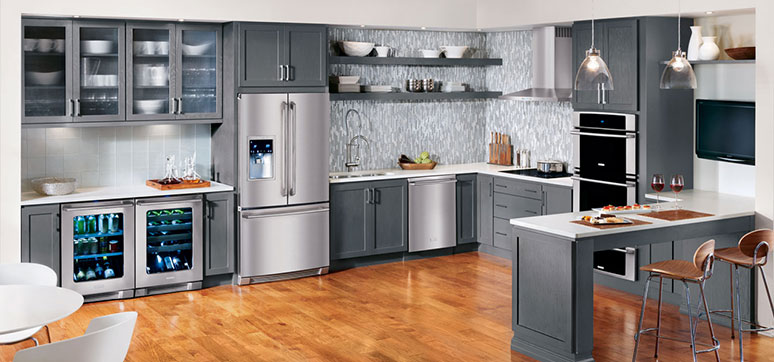

This alarm produces a huge sound which drops down the attention of the user.
A flame-sensor is one kind of detector which is mainly designed for detecting as well as responding to the occurrence of a fire or flame. The response of these sensors is faster as well as more accurate. This sensor uses the infrared flame flash method, which allows the sensor to work through a coating of oil, dust, water vapor, and ice.
Basically, the IoT Smart Kitchen does the following tasks:
- Monitor the Kitchen Temperature & Humidity using DHT11 Sensor on Blynk App
- Monitor the Air Quality Index (Gas) using MQ-135 Gas Sensor on Blynk App
- Displays the Kitchen Temperature, Humidity & Gas Level on 0.96″ OLED Display
- The exhaust fan turns ON & the Alarm activates, once Gas level exceeds
- Detects the presence or absence of a person in the Kitchen using a PIR sensor
- Sends Alarm Status, Exhaust Fan Status & Person in Room Status to Blynk App.
- User can turn ON/OFF Fridge, Oven, Room Light Remotely from Blynk App
What are Smart Kitchen Appliances?
With the changing and evolving times, it is important that our appliances get smarter and more intelligent too. Thus, designers have come up with innovative smart appliances with the latest technologies and hi-tech features for smart cooking areas.
Smart kitchen appliances are nothing but your normal home kitchen appliances from the list laced with the latest technologies and intelligent features. Also, a smart kitchen appliance makes cooking easier and delightful by using innovative and intelligent features such as Artificial Intelligence, Wi-Fi connectivity, voice control, scanners, etc. Moreover, smart appliances understand your preferences and communicate with each other to transform your cooking experience and take it to the next level.
List of Smart Home Appliances:
Smart Refrigerator:
A smart refrigerator is one that is connected to the internet. Depending on the refrigerator that you choose and the brand, a smart fridge can offer several different convenient features. Most smart fridge brands offer an app that can be installed on a mobile phone or other devices to allow the owner to see updates on their fridge remotely.
Most smart fridges allow you to see what is in your refrigerator in real-time from anywhere. Some also provide the feature to see expiration dates on all of your groceries so you can remember to eat them before they go bad, saving you the added cost of buying it again.
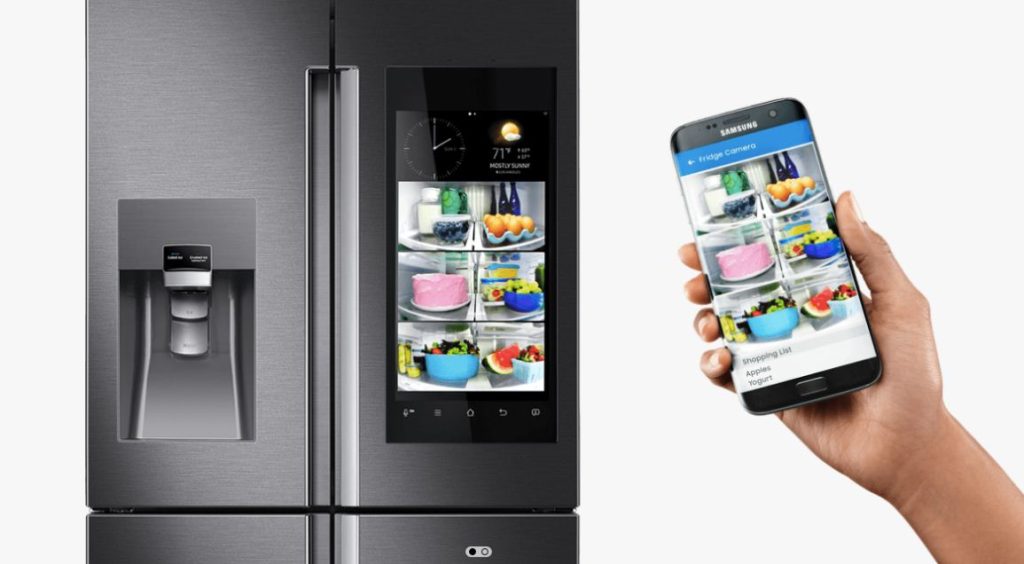

These features make it easier to efficiently grocery shop and only spend money on groceries that you actually need. A wi-fi-enabled refrigerator can cost more upfront than a standard refrigerator. However, features like this could save money, in the long run, preventing you from wasting money on extra food.
Save Energy: A smart refrigerator which is 250 litres and is frost-free, generally consumes about 199.22 Kilowatt per hour. Therefore, your electricity bill will be less and save a lot of money.
Not only are smart fridges more energy efficient because they are newer, but they can save on electricity costs by continually monitoring issues and easily allowing the ability to adjust temperatures. Most smart fridges will send alerts to the user if something is blocking the circulation in the fridge or freezer. Some can also be programmed to run their more energy-consuming needs during off-peak hours, which can save homeowners money in some parts of the country.
Where to Purchase Your Smart Fridge: Available at Amazon; Flipkart.
Home Connect coffee machine
The smart fully automatic coffee machines can be controlled easily from any room with the Home Connect app. While you enjoy a gentle start to the day, your coffee machine will work away fully automatically, preparing your favourite coffee in your kitchen.
Coffee just as you like it – at any time. Whether you prefer espresso, latte macchiato or a big cup of white coffee, smart coffee machines with Home Connect take note of how you and your family like to take your coffee.
You can even use the Home Connect app to widen your knowledge about everything to do with coffee. This means that you and your guests can enjoy finding out about new blends and flavours.
Benefits of a smart coffee machine: Convenience above effort: While you enjoy your latte macchiato with extra foam, your machine’s auto Milk Clean function will clean the milk system completely automatically.
Electric Dishwasher
An Electric dishwasher is a machine used to clean dishware, cookware and cutlery automatically. Unlike manual dishwashing, which relies heavily on physical scrubbing to remove soiling, the mechanical dishwasher cleans by spraying hot water, typically between 45 and 75 °C (110 and 170 °F), at the dishes, with lower temperatures used for delicate items.
The first mechanical dishwashing device was registered in 1850 in the United States by Joel Houghton. This device was made of wood and was cranked by hand while water sprayed onto the dishes. This device was both slow and unreliable. Another patent granted to L.A. Alexander in 1865 was similar to the first but featured a hand-cranked rack system. Neither was practical or widely accepted.


A mix of water and dishwasher detergent is pumped to one or more rotating sprayers, cleaning the dishes with the cleaning mixture. The mixture is re-circulated to save water and energy. Often there is a pre-rinse, which may or may not include detergent, and the water is then drained. This is followed by the main wash with fresh water and detergent. Once the wash is finished, the water is drained, more hot water enters the tub by means of an electro-mechanical solenoid valve, and the rinse cycle(s) begin.
After the rinse process finishes, the water is drained again and the dishes are dried using one of several drying methods. Typically a rinse-aid, a chemical to reduce surface tension of the water, is used to reduce water spots from hard water or other reasons.
The operations in a dishwasher: A dishwasher operates a few automated steps in sequence. First it fills up with water and heats the water to a desired temperature. Then the utensils are sprayed with hot water and detergent, alternately draining and refilling the water. After the final rinse the utensils are air-dried or heat-dried. Any heating operation typically consumes a lot of electricity and so the heating of water and heat drying will consume a lot of electricity.
How much electricity do they use: Dishwashers come in different sizes and they also have multiple modes in which they can be used. But a typical dishwasher would consume about 1-2 units per load on dishes.
Tips to save electricity on dishwashers:
1.Use dishwashers at a lower temperature setting. Heating consumes a lot of electricity and thus it is best to use the dishwasher at optimum temperature setting. You can refer to the manufacturer’s recommendation in the product manual.
2. Make sure that the dishwasher is full when used but do not overload it.
3. Use air-dry mode to dry the utensils if there is one. Avoid using heating elements to dry the utensils, as it will consume a lot of electricity. Opening the door slightly after the final rinse will dry the utensils faster.
4. Try using the most energy efficient mode as mentioned in the user’s manual.
LED Lighting
The mood of a space is heavily influenced by the amount and kind of light the room has. LED lights are a great way to add accent lighting to your kitchen.
Without having to turn on every light in the kitchen to use the stove or having to eat at the table under a bright white overhead light, you can control the vibe of the room with some added LED lights.
Electric Rice Cooker
A rice cooker is a useful kitchen appliance for those who have a limited recipe repertoire and those who have a paucity of time. It has a heat source, a cooking bowl and a thermostat and is used for boiling and steaming rice. With the technological advancements of a rice cooker, preparing rice has become an easy process. Just adding the required rice and water accordingly in the rice cooker is all that one needs to do. The appliance does all the work by itself and also indicates when the rice is ready to be served.
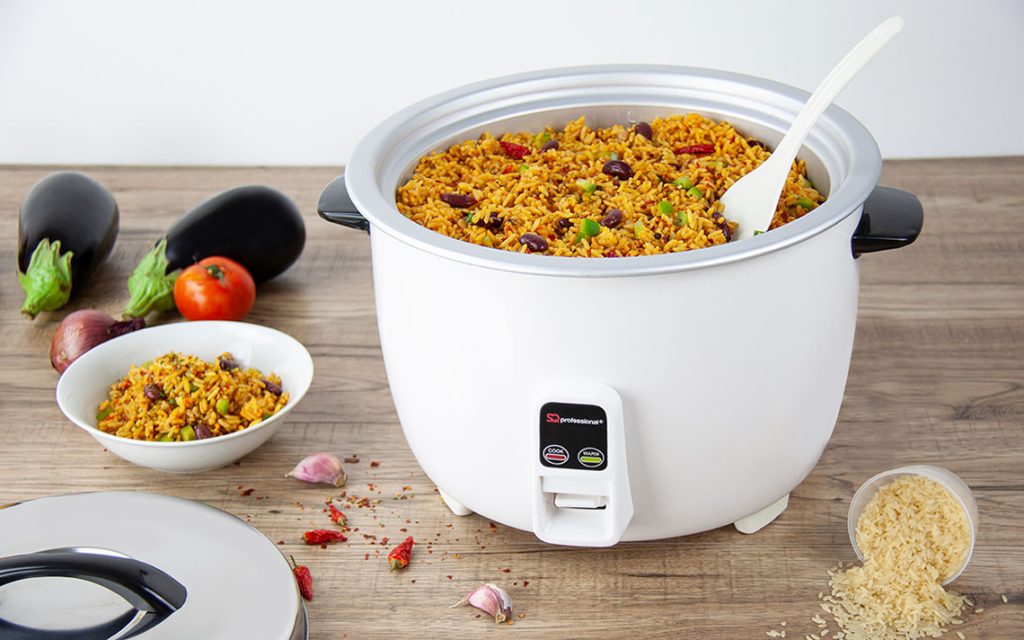

Automatic electric rice cookers were first released in 1955 by the Japanese company Toshiba.In December 1956, the Toshiba Corporation placed the first commercially successful automated electric rice cookers on the market.Since then, millions have been sold worldwide. The rice cookers available today are not much different from the original models.
While cooking (when water is being evaporated from food), about 700 watts of electric power is consumed; in slow cooking mode, once the food is cooked, about 30–45 watts of electricity is consumed.
Size and capacity: Rice cookers come in different sizes and capacities. Unlike most kitchen appliances, these cookers don’t take more space than a large vessel. The capacity of a rice cooker is measured by a total number of rice cups it can cook. Electric rice cookers are available with capacities ranging from 1 to 6 litres, and some even more. While buying an electric cooker, the first thing to consider is the size of your family. If you are a small family of 5 to 6 people, consider buying a cooker of 3 to 5 liters of capacity. Also, consider how many cups of rice you typically need.
Easy to operate: Most electric cookers come with a one-touch operation. This means you only have to add rice, a sufficient amount of water and let the cooker do the rest. There are more advanced electric cookers with digital controls and functions. There are functions such as self-timer/delay start, automatic keep warm, slow cooking, steaming and more. It is ideal to have a self-timer or delay start function in an electric rice cooker. It sets the cooker to start functioning at a specified time and even tells you the time left until the rice is ready to serve. These features let you automate things and you can be rest assured your rice will be ready when it’s time to eat.
Microwave Cooking
Microwave cooking is a modern, frequently used procedure for food preparation. Microwave cooking or re-heating of foods, particularly in the home, has expanded greatly in recent years and so there is an increasing range of chill, ambient, and frozen-stored foods for microwave heating. Furthermore, it is likely that the use of microwaves to cook or pasteurise foods either industrially or domestically will grow in the future. Key issues are the design and preparation of foods that heat predictably with microwave energy.
All microwave ovens use a timer to switch off the oven at the end of the cooking time.
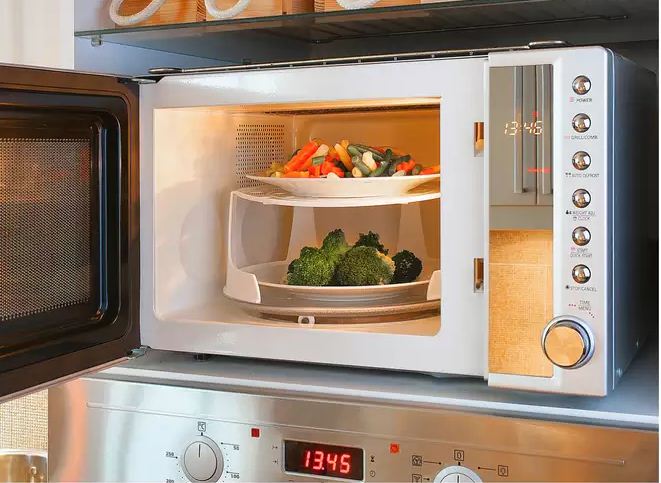

Microwave ovens heat food without getting hot themselves. Taking a pot off a stove, unless it is an induction cooktop, leaves a potentially dangerous heating element or trivet that will stay hot for some time. Likewise, when taking a casserole out of a conventional oven, one’s arms are exposed to the very hot walls of the oven. A microwave oven does not pose this problem.
It is estimated that a microwave is used, on average, about 15-30 minutes per day. It takes about 1200 watts per hour for an average microwave to run.
Benefits of Using a Microwave Oven: Microwave ovens are faster than conventional ovens for cooking and reheating. Some vitamins are retained when food is cooked in the microwave rather than when it is cooked in a regular oven, because longer cooking times destroy beneficial nutrients in food. Microwave ovens only use electricity, not gas, charcoal or oil, which reduces their carbon footprint and eliminates pollution beyond that which is created in the production of electricity. Microwaves do not brown foods, especially proteins. Dangerous organisms have less time to thrive on food that is cooked in the microwave because the food is brought to a high temperature quickly and can be served right away.
Effects on Food and Nutrients: Microwave ovens can reduce the amount of vitamins B, B1, C and E in foods. Microwave ovens can also damage the protein and amino acid contents in meats and reduce the food’s nutritional value. However it is often better than boiling the same foods, which will remove even more of these nutrients because nutrients are lost through prolonged exposure to heat. It is recommended not to use microwave ovens to warm up bottled breast milk, because it can reduce its nutritional value; it is advised to heat up breast milk under hot water instead.
Mixed Gas Hob
Mixed hobs with a modern design that allow you to combine traditional gas or electric cooking with the latest innovations in the field of induction, using combined cooking zones. They guarantee a quick and versatile performance with a high level of customisation.
Suitable for all culinary needs, the hobs in Chimera range allow for extreme versatility in the kitchen. Technologically advanced and customisable in terms of controls and cooking zones, they guarantee speed in preparation and great flexibility.
Elegant design and solutions designed to guarantee maximum efficiency combined with great attention to detail and finishes: these are the characteristics of the mixed, glass-ceramic hobs in the Idra range.
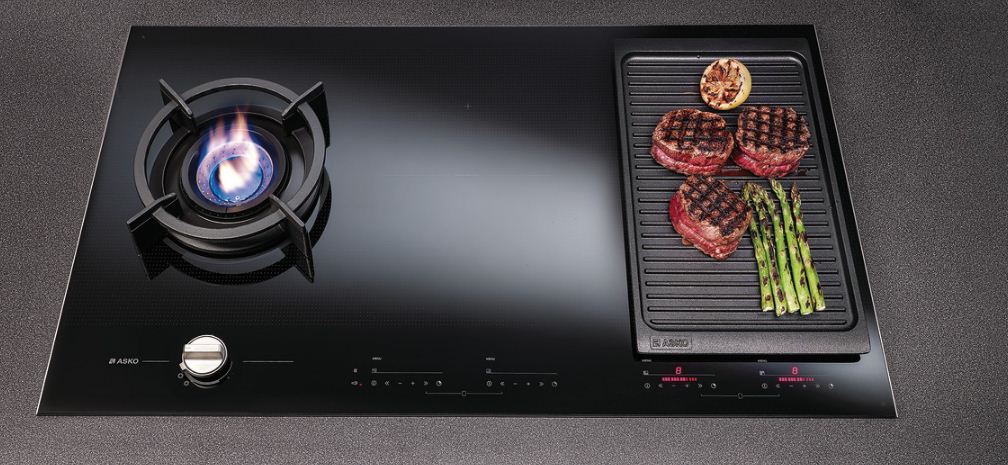

Available in different flame and Hi-Light plate combinations, with electronic controls and knobs.





















